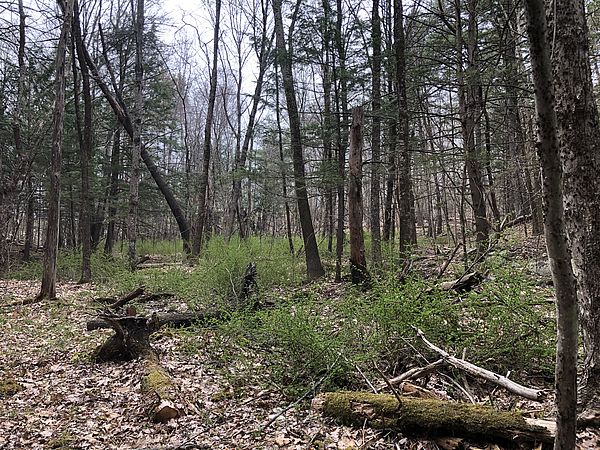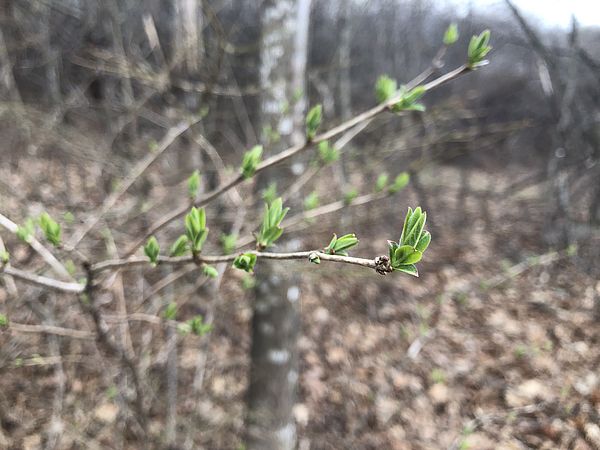Enjoying spring? You aren’t the only one; many invasive plants outcompete native flora by leafing out first, thereby taking up space, light, and nutrients. You can use this early season trait to get a head start on identifying them and making a plan to control them.
Spring Green
As shown in the photos here, invasive barberry and honeysuckle species are already leafing out in April. It’s common for woody invasive species to get an early start in the spring. As you go outside this month, scan for patches of green amidst the browns and grays. It’s possible that much of the fresh vegetation you observe is from hard-stemmed invasive plants.
Identification Guide
According to New Hampshire Fish & Game, an invasive species is defined as a plant, animal, or any other organism that causes ecological or economic harm in an environment where it is not native. Invasive plants can reduce biodiversity, imperil rare species, reduce wildlife habitat, degrade water quality, impact forest production, and cause human health problems.
Make a note of where you see these potential invaders. As their leaves take shape, check an identification resource; you can download this New Hampshire-specific invasive species guide from the University of New Hampshire Cooperative Extension.
As you learn about the invasive plants, note their species-specific recommended control and disposal methods. Know that controlling such plants can take many years of persistent effort. Good luck, and let us know if the identification technique worked in your area!
Related Links
Learn more about invasive species (plants and pests) with the University of New Hampshire Cooperative Extension.

